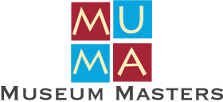The plank-shaped figurines of human form were either made of clay or stone. These figurines became the most common form of human representation in Cypriot art and they were probably associated with fertility, birth and death. They are usually discovered in tombs. Inspired by a plank-shaped figurine from Cyprus, which dates around 2000-1800 B.C., we created a letter opener with this impressive handle. The letter opener is made of brass and it is a special gift for a friend or a colleague.
Dimensions: 19,5cm x 2cm x 6mm
All prices include VAT.
The plank-shaped figurines, which were usually made of clay, became the most common form of human representation in Cypriot art, during the Early and Middle Bronze Age (2000-1600 BC). They had flat rectangular body and a narrower head and neck. Facial features and ornaments were indicated by incised and painted patterns with the exception of noses, ears and breasts, that were often modelled. Such figurines are usually discovered in tombs.
During the Early Cypriot III - Middle Cypriot I period (2000-1900 BC), the plank-shaped figurines were often made of stone. They were comparatively large in size and they had a plain rectangular body with angular protrusions for the arms. The figurines were probably associated with fertility, birth and death. The findings of the stone figures are rare and come mainly from graves.
Plank-shaped figurines are displayed at the Museum of Cycladic Art in Athens.
No posts found









